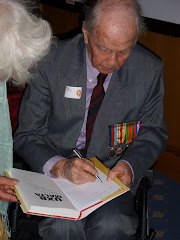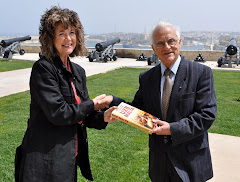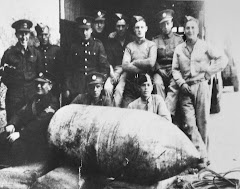Just about every holidaymaker who goes sightseeing in Malta visits the famous Parish Church of St Mary in the town of Mosta. Its beautiful Rotunda, the third largest in the world, stands like a beacon dominating the skyline towards the north of the Island. As visitors stand in awe underneath the magnificent dome, they hear a story from the darkest hours of World War 2.
Mosta was in the direct flight path of enemy bombers retreating from or heading to the RAF base at Ta Qali. As a result the town was heavily bombed in the first four months of 1942, and civilian casualties were high. Never before had their faith been more important to the people of Mosta.
At 1640 hours on 9 April 1942, up to 300 of them were gathered in the church to hear Mass when a 500kg Luftwaffe bomb pierced the dome and landed among them. It failed to explode. The shocked parishioners were ushered out of the Church to safety and no-one was hurt.
News of the remarkable escape spread quickly across the Island, and among these deeply religious people it wasn’t long before the event was being described as a miracle. When the siege was over, the Maltese began to rebuild their lives and tried to forget the horrors of the war. But the story of ‘the Miracle of Mosta’ was kept alive, as a symbol of the faith and hope of the Maltese in such troubled times. In due course, a commemorative display was set up in an ante-room, with gift shop.
Inevitably, like many remarkable tales that are told and retold, over the years the tale of Mosta has reached mythical proportions, with the inevitable blurring of truth and fiction. A thorough investigation of all aspects of the event was carried out by the late Anthony Camilleri, published in his 1992 book ‘Il-Hbit mill-Ajru fuq ir-Rotunda tal-Mosta’. However, even he was at the mercy of the effect time has on the memory.
The photograph (see image R)
For many years this photograph was believed to show the actual unexploded bomb removed from the church at Mosta, and was sold in the church on that basis. The bomb shown here is at least 1000kg.
The bomb
The UXB removed from the church on 9 April 1942 was a 500kg German high explosive. Contrary to some recent claims, it was a live bomb; it was not full of sand and did not contain a message of greeting. The bomb on display in the church is not the real one but a similar example.
The removal
The emotional attachment to Malta of many who served there during World War 2 has drawn them to return as holidaymakers in recent decades. They often identify strongly with Mosta, so much so that some believe they were present that day in 1942. According to several sources in Malta, former RAF and Army servicemen from a range of regiments have stated that they shepherded the congregation out to safety, others that they picked up the bomb and carried it out of the church.
Who did it
The disposal of the unexploded bomb at Mosta on 9 April 1942 is logged in the official War Diary of the Royal Engineers Bomb Disposal Sections. For them, arriving after people had been led out of the church by their priests, there was no sense of a miracle at the time – it was just a routine UXB.
The bomb on display in the church represents something beyond the ‘miracle of Mosta’. It stands for just one of over 7000 unexploded bombs dealt with by the RE Bomb Disposal Sections in two years. The real story of the men who dealt with the Mosta bomb is uncovered in my book ‘UXB Malta’ available from 1st May 2010.
Subscribe to:
Post Comments (Atom)






This confirms what my father told me. Do you know who defused it. Patrick Ashall
ReplyDeleteTalking about Malta on the whole, it is located in the beautiful Mediterranean Sea. Its weather condition is favourable. luxury holidays to Malta are mostly popular in the weekends because during these periods traditional and special events take place. You can enjoy these events to the fullest. Malta is connected to London by air and it is cheap. People can enjoy mainly two places here. These are Sliema and St. Julians coastal towns.
ReplyDeleteMy husbands grandad was one who helped with this bomb, his surname is leonard. unfortunately he died many years ago, I am taking my husband to Malta in September so he can see the sights, but unfortunately I have no idea where his grandad would have been stationed, as I would have loved to have taken him there also, if you have any idea where it is could you let me know please. this country and her people are wonderful, and I myself is looking forward to going back
ReplyDeleteWas he James Lee Leonard? If so, please email bdmalta@btinternet.com as soon as possible so we can take this forward. Apologies for the late reply due to technical issues.
DeleteI heard my grandad Alex green was one who also helped with this bomb, and was told he was in this photo,but I don't see his name with the others underneath the photo
ReplyDeleteMy uncle William Jones also carried out bomb disposal duties in Malta and was featured in a film part of which appeared on the BBC. I have been unable to find this film.
ReplyDelete